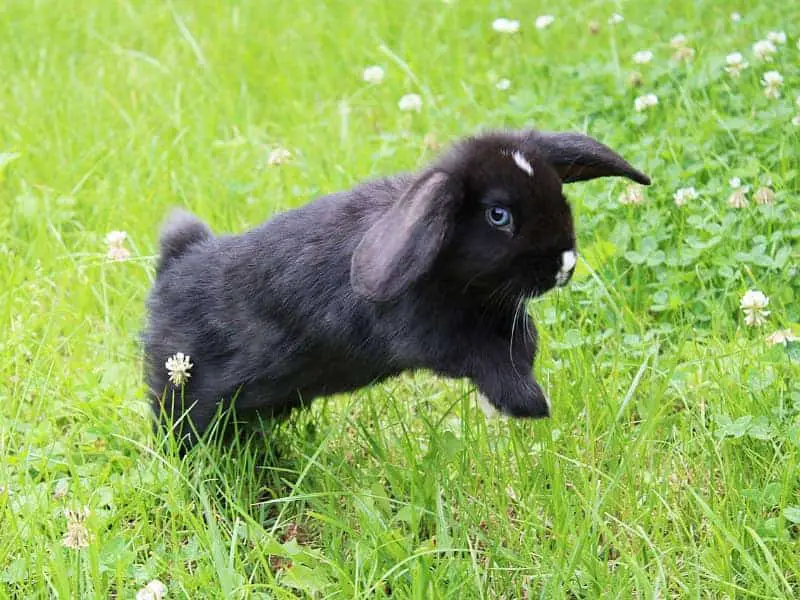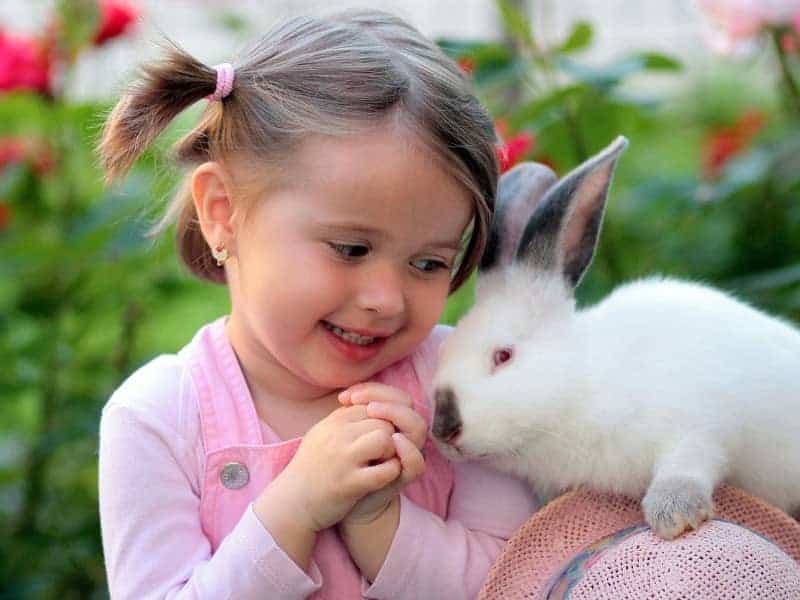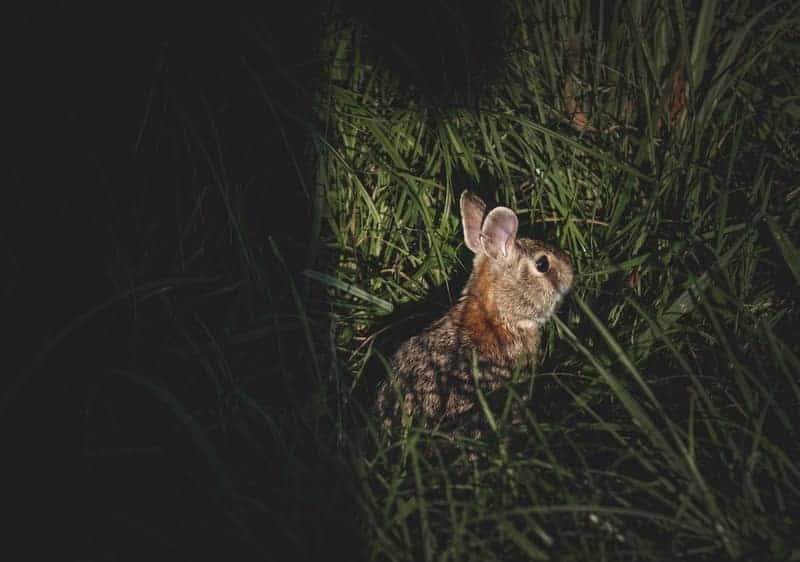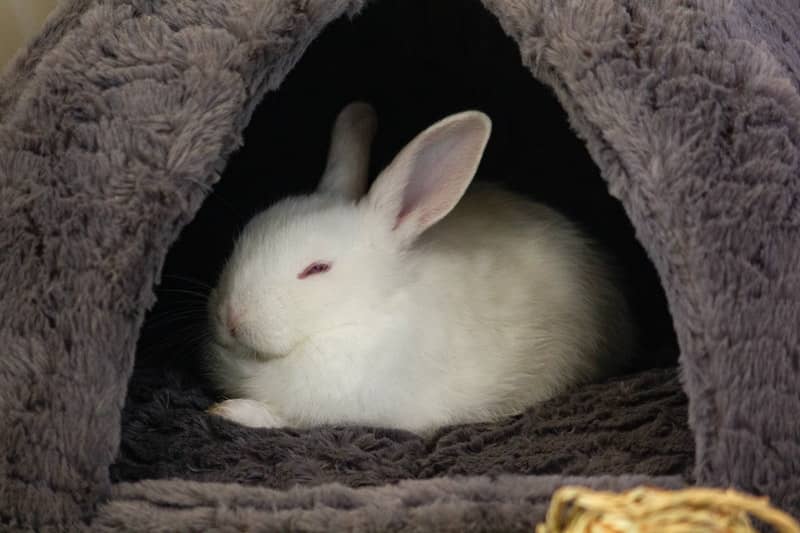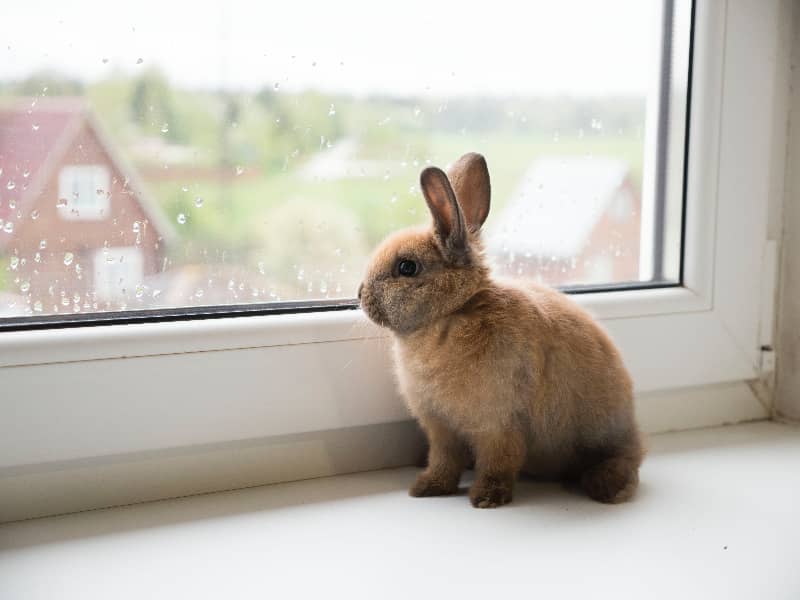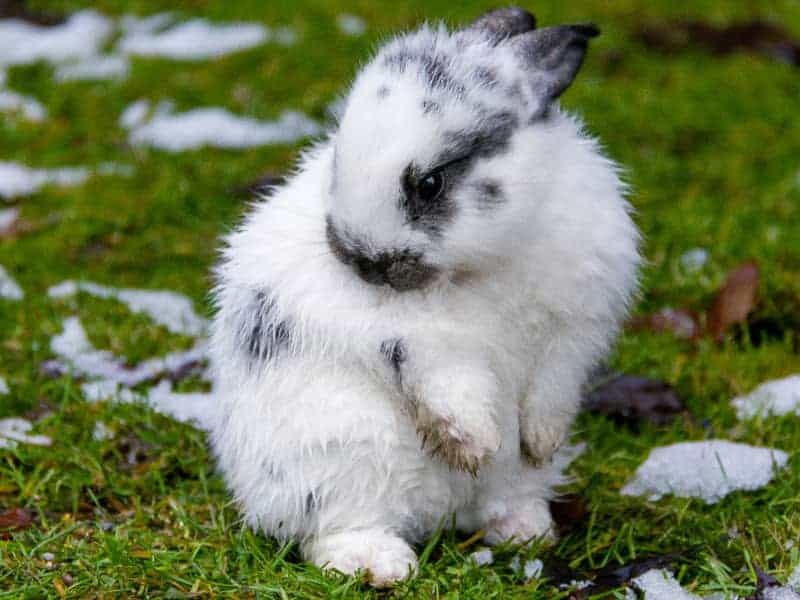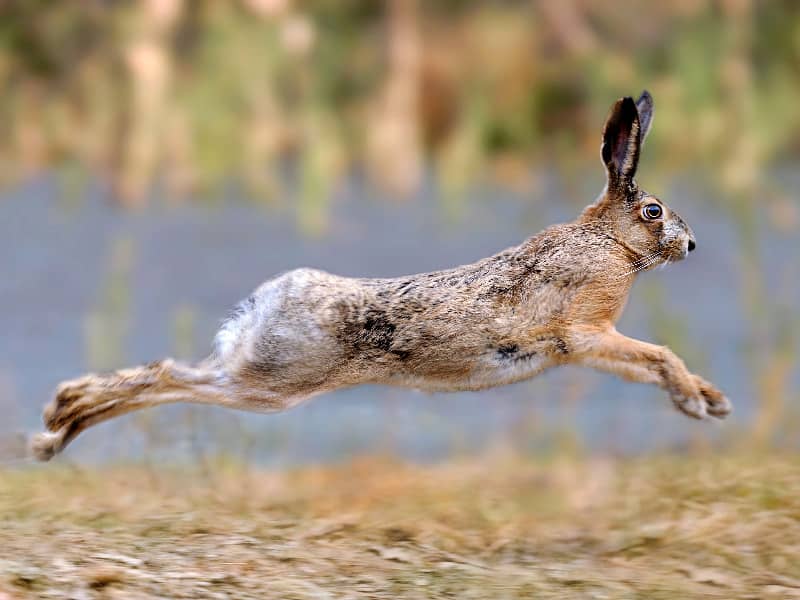
Field hare in garden
The home garden is not only a place of recreation and greenery, but also a stage for the fascinating diversity of wildlife. Among the various inhabitants we may encounter, the brown hare is a particularly striking presence in the garden. Its adaptability, behavior and role in the ecosystem make it an interesting and important part of our natural environment.
Over the course of this blog post, we will delve into the world of the brown hare and take a closer look at its presence in the garden, as well as its behavior and characteristics. From its adaptations to urban habitats to its interactions with other garden residents, we will explore a variety of aspects. We will also look at the significance of the brown hare in nature, its annual cycle, and its symbolism in different cultures.
This fascinating journey into the life of the brown hare will not only expand our knowledge of these animals, but also inspire us to consciously design our gardens to provide a safe and welcoming environment for these fabulous creatures. Let's delve into the world of the brown hare together and discover the hidden secrets it brings to our gardens.
- Field hare in garden
- The brown hare: a special garden inhabitant
- Habitat and behavior of the brown hare
- Brown hare vs. wild rabbit: Distinguishing features
- Challenges for the brown hare in the garden
- Natural enemies of the brown hare
- Observe and photograph brown hare
- Brown hare friendly garden: design tips
- Annual cycle of the brown hare in the garden
- Myths and facts about the brown hare
- Brown hare and environmental protection
- Brown hare in cultural context
- Personal encounters with the brown hare
- Conclusion: brown hare in the garden
The brown hare: a special garden inhabitant
Its adaptability to urban and rural environments is impressive, and its presence can expand our view of nature.
The importance of the brown hare in nature
The brown hare, also known as Lepus europaeus, is more than just a cute garden visitor. It helps maintain the ecological balance by controlling plants and adding itself to the food chain. Its presence can indicate the health of the ecosystem.
Adaptations of the brown hare to urban environments
Despite its original association with open landscapes, the brown hare has made amazing adaptations to urban habitats. Its behavior and foraging have adapted to the proximity of the human environment, which makes its presence in gardens all the more remarkable.
The role of the brown hare in the garden ecosystem
In the garden, the brown hare takes on an important role. It influences plant growth and biodiversity by selectively eating certain plants. This can indirectly help maintain the balance between different plant species and create habitat for other animals.
Habitat and behavior of the brown hare
The habitat of the brown hare ranges from open fields to gardens, creating a close link with the human environment. Its behavior and habits fascinate nature lovers and allow to learn more about this fascinating creature.
Natural habitats of the brown hare
The brown hare is comfortable in a variety of habitats, including grasslands, meadows and even cultivated land. Its adaptability to different environments allows it to find a niche even in urban areas such as gardens.
Foraging and feeding behavior
Its diet consists mainly of grasses, herbs and agricultural plants. During the night and early morning hours, the brown hare goes in search of food, using its remarkable speed and agility to protect itself from predators.
Social behavior and reproduction
Brown hares tend to be solitary and become territorial. During the mating season, males exhibit impressive courtship behaviors to attract females. Reproduction rates depend on factors such as food, weather, and season, and can have significant effects on the population.
Brown hare vs. wild rabbit: Distinguishing features
Although brown hares and wild rabbits are often confused with each other, there are clear differences between the two species. A thorough understanding of these distinguishing features can help to better identify the two animals and appreciate their unique characteristics.
Physical differences and characteristics
Brown hares are usually larger than wild rabbits and have longer hind legs and ears. Their coat color varies depending on the season, while wild rabbits have a more constant appearance. The tail of the brown hare tends to be black at the tip, while the tail of the rabbit is completely white.
Behavior and lifestyle in comparison
Brown hares are usually more active during twilight and at night. They tend to rest in shallow hollows, while wild rabbits use self-dug burrows. While brown hares live in open areas, rabbits tend to prefer areas with cover.
Interactions between brown hares and wild rabbits
Although their habitats often overlap, brown hares and wild rabbits have different behaviors and social structures. Conflicts between the two species are rare because they occupy different niches and have different food and habitat preferences.
Challenges for the brown hare in the garden
The presence of the brown hare in the garden can be both an asset and a challenge. A conscious understanding of the potential conflicts and opportunities for coexistence can help create a harmonious environment for both humans and animals.
Human influences on the habitat
The effects of urbanization can affect brown hare habitat. Construction projects, road building, and intensive agriculture can fragment and reduce habitats. Awareness of wildlife needs is important to protect their habitats.
Prevention of conflicts between humans and brown hares
Although brown hares are generally shy, they can cause damage to plants in gardens. Planting resistant plant species and establishing barrier plants can help minimize conflicts. A balance between wildlife conservation and garden needs is possible.
Protective measures for the preservation of the brown hare population
To protect the brown hare population, it is important to preserve habitat and food. Natural refuges such as hedgerows and grass strips can serve as protected areas. Support from conservation organizations and raising awareness of the value of wildlife are also important.
Natural enemies of the brown hare
In the garden and in the wild, the brown hare has many natural enemies that influence its survival strategies and behaviors. The interactions between predators and prey are fascinating and contribute to the dynamics of the ecosystem.
Predators and their hunting techniques
The hare's main enemies include birds of prey such as the buzzard and the sparrow hawk, and predators such as the fox and the marten. Each predator has developed its own hunting strategy to catch the fast and agile hare.
Protection mechanisms and escape strategies
The brown hare has developed various protective mechanisms to escape prey predators. Its rapid acceleration and ability to stop suddenly and change direction make it an elusive target. In addition, brown hares can jump well to overcome obstacles.
How to get protection for the brown hare in the garden
A well-designed garden can provide shelter for the brown hare. Dense plantings, hedges, and shrubs can serve as hiding places, while open areas provide him with a clear view of potential threats. Garden design can help maintain a balance between prey predators and prey.
Observe and photograph brown hare
The opportunity to observe and photograph the brown hare in its natural habitat offers a unique opportunity to get to know its behaviors and living environment better. With some practical tips you can make these encounters successful and capture unforgettable moments.
Tips for observation of the brown hare
To see the brown hare in action, you should get up early or lie in wait in the late afternoon. These times are especially favorable because the brown hare is more active at these hours. Choose a position from which you have a good view of the areas where the hare usually forages or rests. Move quietly and slowly so as not to startle him.
Behavior during different times of the day
The time of day significantly affects the behavior of the brown hare. In the early morning hours, when the air is still cool, they are often seen foraging, while during the day they tend to rest in seclusion. In the late afternoon, they awaken again to their active phase. Be sure to recognize these behavior patterns to optimize your observations.
Photography tips for successful shots
Photographing brown hares requires patience and respect for their natural behavior. Use a camera with a telephoto lens to get high-quality shots from a safe distance without disturbing them. Look for backgrounds that reflect the hare's habitat, such as meadows or fields. Be alert and wait for moments when the hare strikes an interesting pose or performs a natural action.
Brown hare friendly garden: design tips
Designing your garden can help create a welcoming environment for the brown hare while protecting your plants and flowers. With some careful consideration, you can create a harmonious habitat that pleases both humans and wildlife.
Plant selection for natural food sources
Choose plants that provide natural food sources for the brown hare. Grasses, forbs and low growing plants are ideal. These plants serve not only as a food source, but also as cover, which gives the brown hare a sense of security.
Shelters and retreats
Incorporate shelter options such as hedges, shrubs or small bushes into your garden. These not only provide protection from predators, but also create a suitable habitat for the brown hare. Allow him various hiding places to feel safe.
Minimization of disruptions and stress factors
Avoid loud noises, rapid movement, and other disturbances that may frighten the brown hare. Keep your garden area quiet and observe from an inconspicuous position. Low disturbance means less stress for the hare and allows you to observe its behavior close to nature.
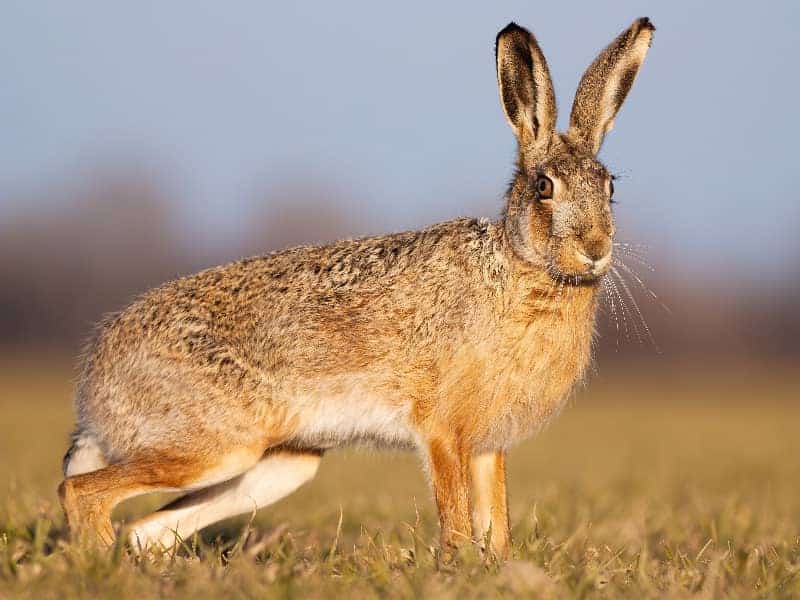
Annual cycle of the brown hare in the garden
The annual cycle of the brown hare is a fascinating sequence of events that shape its behavior and activities throughout the seasons. Understanding this cycle can help to better appreciate the connection between the hare and its habitat.
Spring: mating season and nest building
Spring is the beginning of the mating season for the brown hare. Male hares display conspicuous courtship behavior to attract females. Females build nests, called "sassen," which they line with grass and fur. These serve as safe retreats for giving birth and raising young.
Summer: rearing the young
In summer, the female usually gives birth to two to four young, which are called "graylings". The young are already well developed and covered with fur at birth. They spend most of their time in the nest and are visited by the mother only for suckling. The mother rarely leaves the nest to protect the young from predators.
Autumn and winter: Foraging and survival strategies
In autumn, young brown hares gradually leave the nest and begin to forage for food on their own. This is a crucial time to develop their survival skills. During winter, brown hares rely on their natural adaptations such as thick fur and their ability to find food under the snow cover.
Myths and facts about the brown hare
The brown hare is surrounded by many myths and misconceptions, often due to ignorance. It is important to separate fact from fiction and develop a clear understanding of the behavior and biology of these fascinating animals.
Common misconceptions and errors
A common mistake is confusing brown hares with wild rabbits. However, it is possible to distinguish between the two by physical characteristics and behavior. Another myth is that field hares prefer diseased plants, which is not true. They select their food according to certain criteria to meet their nutritional needs.
Education about the behavior and biology of the brown hare
The brown hare is a wild animal with complex behaviors and survival strategies. It is important to understand that its behavior is often due to adaptations to its natural environment. Digging up facts about the brown hare can lead to a more respectful relationship between humans and animals.
Contribution of the brown hare in the garden to biodiversity
The brown hare is an integral part of the ecosystem, influencing the balance of nature through its food selection and behavior. Its presence can help maintain biodiversity in a region and control the growth of certain plant species.
Brown hare and environmental protection
The protection of the brown hare and its habitat has far-reaching effects on the environment and the entire ecosystem. The conservation of these fascinating animals is not only a question of animal welfare, but also a contribution to the preservation of biodiversity and the balance in nature.
Importance of species conservation for the ecosystem
The brown hare is an "umbrella species" - its presence signals the health of the habitat in which it lives. Protecting the brown hare helps maintain the health of the ecosystem as a whole. By protecting this species, other animals and plants in its environment also benefit.
Projects and initiatives for the protection of the brown hare
There are various projects and initiatives aimed at protecting the brown hare and preserving its habitats. Conservation organizations work to promote conscious behavior and establish protected areas where the brown hare can safely flourish.
How each individual can help the brown hare in the garden,
Everyone can make a contribution to the protection of the brown hare. This can be done by creating a nature-oriented garden, supporting conservation organizations or promoting awareness of the importance of these animals. By working together to protect the brown hare, we are helping to preserve our environment.
Brown hare in cultural context
The brown hare has a role not only in nature, but also in the cultural consciousness of many societies worldwide. Its appearance in literature, art and symbolism reflects its importance for human culture.
European hare in literature and art
The brown hare has inspired artists and writers for centuries. From paintings to poems and novels, we find its presence in many cultural works. Often symbolizing a connection to nature, the brown hare can carry various emotional meanings.
Symbolism of the brown hare in different cultures
In some cultures, the brown hare is associated with fertility, rebirth, and good luck. In other cultures, it can play a metaphorical role ranging from cunning and speed to wisdom. The variety of cultural interpretations reflects the versatility and fascination of the European hare.
Importance of the brown hare for man and society
The brown hare contributes to the emotional connection between humans and nature. Its presence in our cultural history reminds us how closely we are connected to the animal world. This connection can help develop a deeper understanding and appreciation for the natural environment.
Personal encounters with the brown hare
A personal encounter with a brown hare can lead to unforgettable moments that strengthen our connection to nature and expand our awareness of the wonders of wildlife. Testimonials from garden owners and nature watchers show how these encounters can enrich lives.
Testimonials from garden owners
Many people who have gardens share inspiring stories about their encounters with brown hares. These stories tell of surprising moments of closeness and observation that create a deeper connection to nature and highlight the wonder of wildlife on our doorstep.
Emotional connections and impressions
The sighting of a brown hare in your own backyard can evoke strong emotional reactions. The graceful elegance and natural behavior of these animals touch us on a deeper level. Such experiences can raise awareness of the importance of nature conservation and illustrate the value of biodiversity.
Experiences that strengthen appreciation for nature
A personal encounter with a brown hare can lead to a turning point in awareness. These moments of wonder and appreciation can inspire us to actively participate in conservation projects, shape our wildlife habitat, and deepen our knowledge of wildlife.
Conclusion: brown hare in the garden
The brown hare, a fascinating inhabitant of our gardens, has proven to be a remarkable example of adaptability and survival strategies. Through its presence, it not only enriches our experience of nature, but also helps maintain the ecological balance. In this blog post, we have delved deep into the world of the brown hare, highlighting various facets of its life.
From its role in the garden ecosystem to its interactions with other animals and plants, we have considered the many ways in which the brown hare impacts the environment. We have discussed the importance of its habitat and the challenges it faces. Furthermore, we have highlighted the cultural significance of the brown hare in literature, art, and symbolism.
The brown hare reminds us how closely our world is connected to nature. Its presence in our gardens can help deepen our appreciation for wildlife and strengthen our commitment to environmental protection. By making a conscious effort to protect and respect its habitat, we help maintain biodiversity and balance in nature.
As we conclude this blog post, the brown hare invites us to continue exploring the beauty and diversity of nature around us. His adaptability and stories serve as a reminder of how much wildlife enriches our lives. Together, let's help create a world where humans and animals can coexist in harmony.
Author
-
About Tiermomente: animal lover and passionate blogger
Hello, I'm Mel (Melanie, and I welcome you to our blog! At 32 years old, I am a dedicated animal lover and blogger who is passionate about animals and their fascinating world.
From an early age, I was fascinated by animals in all their diversity and beauty. Whether fluffy four-legged friends, feathered friends or scaly fellows - each species has its own stories to tell. My goal is to capture these stories and share them with you.
As a co-author on this blog, I would like to take you into the exciting world of animals. I firmly believe that by understanding and respecting the animal world, we can not only broaden our own perspective, but also help to keep the earth livable for future generations.
In my free time, I often venture into nature to observe animals in their natural habitat. The beauty of the animal world always inspires me and drives me to gather and share knowledge about animals. I look forward to taking you on this exciting journey as we explore the amazing world of animals together.
Follow this blog to discover exciting articles, fascinating stories and informative insights into the animal world. Together, we can build something and commit to protecting and appreciating animals. Let's learn, marvel, and experience the magic of wildlife together!
Thank you for being part of this journey.
Cordial,
Mel aka animal moments
Last posts
- August 25, 2023RabbitField hare in garden

